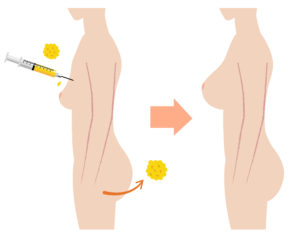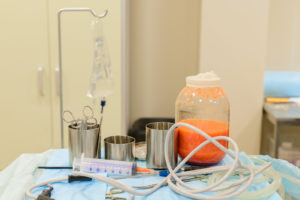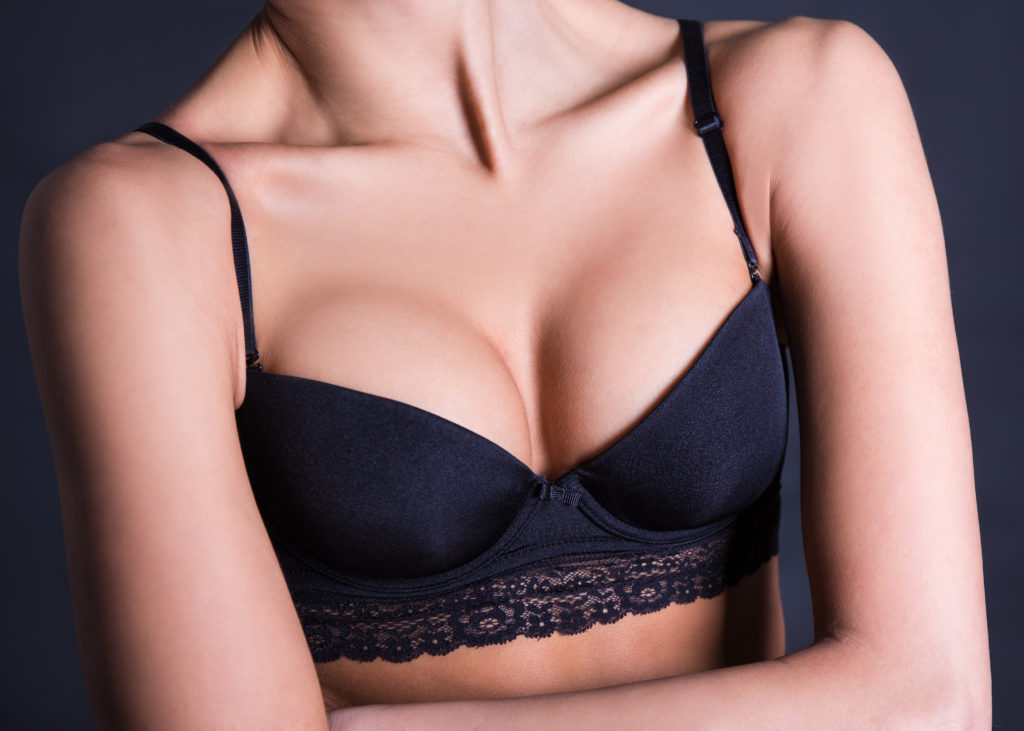What to do if the fat transferred starts to disappear
Want to enhance your breasts but don’t want to undergo typical breast augmentation with implants? You’re not out of luck; there’s a way to achieve bigger breasts without implants—and it’s natural. A natural breast augmentation, also known as a fat transfer to the breast is a two-fold process that takes excess, unwanted fat from one part of the body through liposuction and injects it into the breast to achieve an enhanced size and shape. The results can be more natural in look and feel than implants and it leaves no scarring on the breast. Not to mention the sculpting benefits that come with liposuction.
How much fat do I need for a fat transfer to breasts?
 As with many aspects of plastic surgery, the correct answer here is that there is no correct answer. The exact amount of fat depends on your goals in fat grafting for breasts, as a larger size requires more fat, and on the amount of fat your surgeon is able to harvest. The more body fat you have, the more fat available to harvest.
As with many aspects of plastic surgery, the correct answer here is that there is no correct answer. The exact amount of fat depends on your goals in fat grafting for breasts, as a larger size requires more fat, and on the amount of fat your surgeon is able to harvest. The more body fat you have, the more fat available to harvest.
When determining your ideal fat transfer breast augmentation results, having realistic expectations for your surgical outcome is very important to your overall satisfaction. Dr. Barrett has gathered an assortment of fat transfer to breasts before and after images you may want to browse to get a fuller scope of not only the type of outcome you can expect, but also his work in breast augmentation and reconstruction. Additionally, Dr. Barrett has a carefully curated postoperative scar regimen to ensure the only reminder of your procedure are your sculpted results.
What if the fat transferred starts to disappear?
The fat transferred to your breasts is absolutely going to disappear—but that’s supposed to happen! As with all fat transfers, not all of your transferred fat cells will survive, but the ones that do are permanent. You can expect to lose anywhere from 20%-50% of the fat transferred, so your doctor will transfer more to compensate. This means that your final results, once your swelling has gone down, are your final results.
What are the risks of fat transfers?
The biggest risks and complications happen in the liposuction part of the procedure, with the biggest risk being  contour irregularity. That is, dimpling or rivets in the skin from not performing the liposuction properly. Dr. Barrett uses the S.A.F.E. liposuction technique for fat cell removal that involves breaking up the fat very carefully before removing it, and though this may seem obvious, but unfortunately isn’t always the case with some surgeons: he takes his time during the procedure. Additional risks include:
contour irregularity. That is, dimpling or rivets in the skin from not performing the liposuction properly. Dr. Barrett uses the S.A.F.E. liposuction technique for fat cell removal that involves breaking up the fat very carefully before removing it, and though this may seem obvious, but unfortunately isn’t always the case with some surgeons: he takes his time during the procedure. Additional risks include:
- Infection, both with the liposuction procedure itself and when you’re transferring the fat, as there’s no blood supply in removed fat;
- Scarring is of course a risk with any surgical operation;
- A hematoma is also a known risk for blood collection after liposuction or the fat transfer;
- Nipple sensitivity is always a risk during any kind of surgery around the areola;
- Loss of breast feeding ability is also a risk, though it’s important to note there’s no evidence that shows the loss of breast feeding ability.
In other words, any time you do surgery on the breast you can potentially affect the functionality of the breast.
Do you want to learn more about Barrett Plastic Surgery? Keep up to date by subscribing to our blog and following us on social media at Twitter, TikTok, Instagram, Realself, YouTube, Snapchat, Yelp, and Facebook for updates.
Thank you for visiting!




0